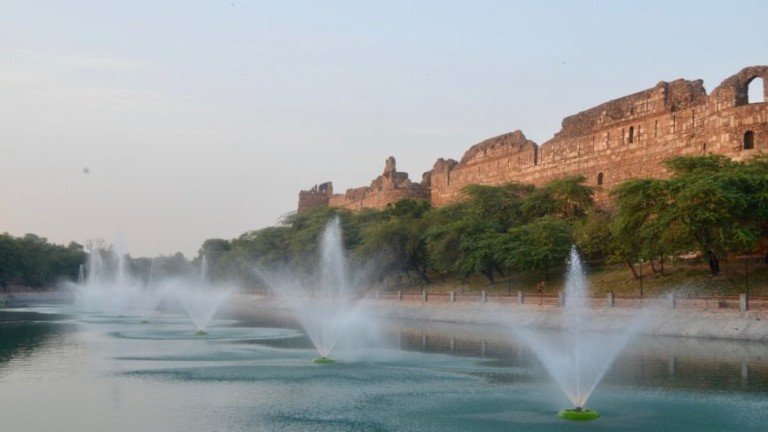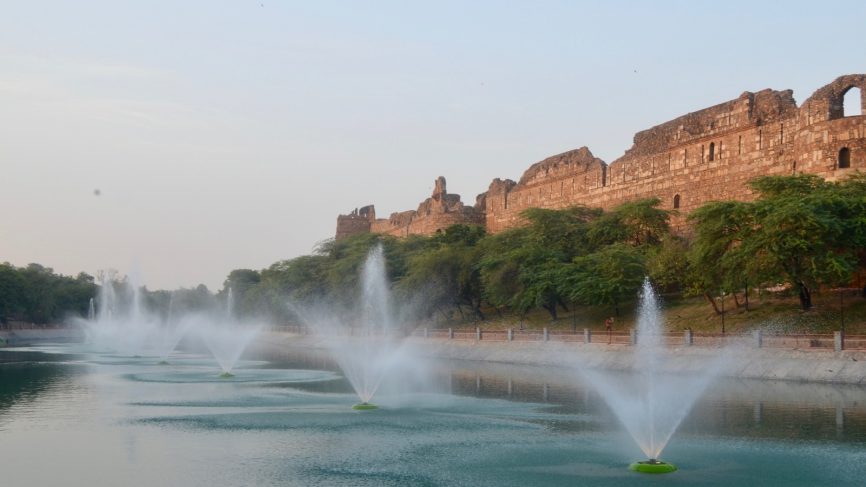 NEW DELHI: IIT students have taken up the rejuvenation and maintenance of the lake at Delhi’s old fort with a plan to minimize seepage of the water by lining the lake bed with an impermeable membrane.
NEW DELHI: IIT students have taken up the rejuvenation and maintenance of the lake at Delhi’s old fort with a plan to minimize seepage of the water by lining the lake bed with an impermeable membrane.
The group from IIT Roorkee has taken up the task of lining the lake bed with ethylene-propylene-diene terpolymer membrane (EPDM) and minimizing the water leakage through a well-designed rainwater harvesting and ground water recharge system, hence creating a sustainable habitat.
The ‘Purana Qila Lake’ is spread over 7 acres. From 2012 to 2017, the Delhi Tourism and Transport Development Corporation (DTDC) maintained water in the lake for boating by pumping water from the ground and allowing direct runoff to enter the lake during rainfall. Concerns existed about the possibility of gushing of treated waste water from various neighboring STPs lines without further required treatment.
“Our team analyzed data from various sources including Archaeological Survey of India and data available in the public and academic domains for the study. The team examined the site details and found that the water that was maintained for boating was of poor quality and had excessive algal growth.
“Seepage of water of such poor quality into the subsurface would have adversely affected the groundwater quality in the vicinity. Once the boating operation and external pumping of water to the lake were stopped, the lake has since dried up completely. During the subsequent rainy season, the lake was mushy at best and did not have standing water,” said IIT professor Bhanu Prakash Vellanki, who is leading the team.
According to Vellanki, laying of the 1.5mm EPDM membrane below the lake bed was advised to reduce the seepage to the subsurface drastically.
“Synthetic liners such as the EPDM membrane have been extensively used in the West for the creation of artificial ponds for aesthetic purposes, canal lining, reducing seepage of lake, aquaculture pond lining, swimming pool lining, etc. Based on various preliminary calculations, we came to the conclusion that the lake is not prone to flooding during peak rainfall events.
“To counteract the effects, if any, of minimal infiltration through the lake after lining, rainwater harvesting structures and infiltration galleries were recommended at suitable locations”, he said.
The old fort which is one of the major tourist attractions, has recently been restored with basic conserving and restoring activities, deepening of the lake and has contributed to the visual appeal of the structure. PTI







